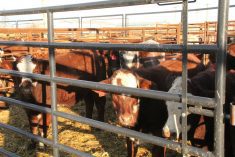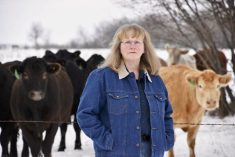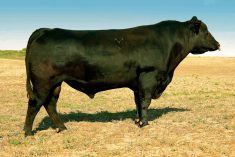The days are ending for making a few bucks by shipping high-risk old, thin or arthritic beef and dairy cattle.
Darren Malchow, a health-of- animals insector for the Canadian Food Inspection Agency in Lethbridge, said the cattle industry is sending the message to all levels that the quality of animals being sent to market is vital for a continued healthy food chain.
CFIA has established guidelines with announced monetary penalties, confirming that cattle producers are responsible for the condition of cattle sent to market.
He said the solution to high-risk cattle entering the food chain is for producers to cull herds earlier, when animals may still be healthy enough to survive the handling and transportation to market.
Read Also

Pig transport stress costs pork sector
Popular livestock trailer designs also increase pig stress during transportation, hitting at meat quality, animal welfare and farm profit, Agriculture and Agri-Food Canada researcher says
Malchow said industry participants from truck drivers to auction markets are buying into the guidelines, with the full backing of CFIA.
For example, a trucker or an auction market may feel pressured to accept a high-risk animal from a regular customer who might bring 200 calves to market.
“I’m telling the truckers and market fieldmen to tell producers that CFIA is putting the pressure on them not to accept high-risk animals, and that should help,” Malchow said. “I will take the blame.”
For instance, a producer shipping a high-risk animal hoping to take home $75 will face a bill for $300 if it goes to a packing plant and is condemned on the rail, or goes down in the truck or auction market and Malchow said high-risk animals are being rejected by truck drivers because if those animals go down in the truck on the way to market, the driver will be fined $1,000.
He said ensuring good condition of market animals helps counter criticism from animal rights movements.
“Animal rights groups have hidden cameras and look for poorly conditioned livestock to damage your industry,” Malchow said.
WHEN NOT TO SHIP
Reynold Bergen, CFIA animal health and welfare manager, said there are several factors to consider when deciding whether to ship cull cows, regardless of when they are culled.
Although D1/D2 cows were recently selling for 45 cents a pound in Alberta, thin, weak, lame or sick cows were selling for three to nine cents. This equates to $36 to $108 for a 1,200-pound animal. Deductions exceeding $30 do not leave much to cover transport costs. Auction marts may refuse to accept cows that buyers are not interested in, leaving you with no revenue, and twice the transport costs.
Bergen said producers, shippers, transporters or transport companies who contravene provincial or federal animal welfare legislation may face fines up to $20,000 and be prohibited from owning animals.
Some cows should not be shipped to auction marts under any circumstances, he said. These include:
Animals that are lame, downers with broken legs, or those that cannot rise, stand and walk under their own power.
Except on the advice of a veterinarian, do not transport sick or injured animals until they have been treated and recovered.
Old, weak or thin cows will need to be segregated from the rest of the herd while they recover. If the animal is not expected to recover, euthanize it on the farm.
If a reportable disease such as rabies, BSE or tuberculosis is suspected, it must be reported to the CFIA immediately. These animals must not be transported.
Bergen said animals that are not fit for transport may be euthanized and disposed of at home instead. If you wish to have the carcass removed, West Coast Reduction charges $78 for a 1,200-pound carcass if deadstock pickup is available in your area.
And cows that are free of drug, vaccine and chemical residues, do not have a fever above 39 C, have a body condition score of two out of five or higher, and are able to walk under their own power may be salvageable through emergency slaughter.
Animals that do not meet all of these criteria will be condemned.


















